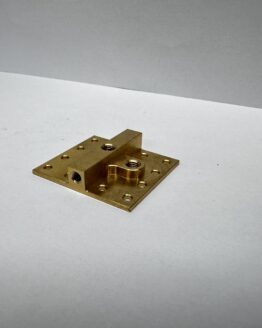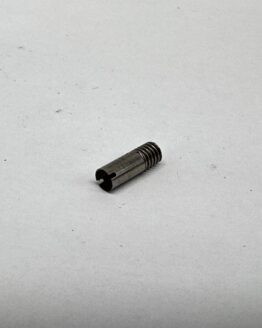Model engineering services provided by a well known and respected model engineer and professional engineer, Ben Pavier of Southport, Northwest, UK
The beginning with model engineering
Model engineering started for Ben when he was 5 years old, during the time when his dad (Paul Pavier) started building a Polly kit. Ben was a very keen and observant youngster, and was always looking on as his dad progressed with each engine. Ben soon learnt to drive the Polly whilst his dad worked on his next engine: LBSC’s “Bantam Cock”, and naturally when this loco was finished there was a lot more driving was to be had! Soon Ben’s focus would shift from not only driving model steam loco’s, but also how to build them as his interest grew.
Ben would go to the Southport Model Engineering Club (SMEC) and drive his dads loco’s when he could. One day Ben came across the gauge one book “The Project”, which is a LMS 4F. Ben thought it was something he could achieve himself, so he set to work – After about 9 months hard work the engine was finished and running.
The 4F gave Ben the skills to attempt a larger engine, and this was to be LBSC’s “Maisie”. Ben acquired a boiler and part built chassis, and once again set to work – within 18 months the engine was finished with 1 week to spare, and entered into IMLEC 2007
Soon after Maisie, Ben then built a gauge one Midland Railway 0-4- 4 tank engine, which was coal fired with hand and axle pumps (If I’m honest it scares me to death as it’s so lively).
In 2008 when Ben was aged 23, he was presented with The David Birkett Award for his contribution to model railways after mastering techniques needed to build model trains. The article from the Lancashire Evening Post goes on to say “A young Lancashire model railway enthusiast has been rewarded for his outstanding contribution in the field.”
Ben’s next project took some time deciding what to do, as Ben wanted it to be a medium sized tender engine in 5” gauge. The design chosen was LBSC’s “Netta”. Ben started Netta in 2011 and got as far as assembling the engine frames together, when a surprise opportunity arrived from another model engineer which was one not to be refused.
Ben was gifted a 5” “Pansy”to the LBSC design with a failed boiler, the owner stipulating that if Ben repaired the boiler and rebuilt the engine in his workshop, Ben could keep it. So that’s what Ben did over the next 6 months every Thursday. The Pansy was soon returned to steam and still sports her original 1986 paintwork, although Ben does not run her often – she floats around and is kept ecstatically clean as a homage and living tribute to the original builder.
The build of Netta did then recommence, although Ben’s original objective had changed slightly. Netta was to originally be an engine that Ben could build simply and run for a few years whilst he built something a bit more detailed. The new objective came about Ben winning IMLEC 2011, Ben’s requirement was for Netta to be as efficient as possible whilst being as powerful as possible for her size. So various modifications have been made to the existing design.
During the build of Netta, Ben also rebuilt a 5” Simplex – The engine was then sold on to someone in the North East.
Ben’s engineering background
Ben had always been around his dad and made the odd bit in the workshop when he was younger, but at first never made any serious effort to get involved in building model locomotives.
When Ben was given the opportunity to rebuild the Pansy, he spent a lot of time with the owner who then took Ben under his wing as an apprentice. The teaching of patience and using tool makers methods to achieve a high standard of accuracy. This accumulated in Netta, amd this engine was in a sense Ben’s toolmaking apprenticeship.
When Ben got a job with a local company working in there machine shop, he stayed in this job for 11 years hoping to progress through the ranks. Unfortunately as much as Ben wanted to progress in his career, he soon realised it was time to move on.
The Start of BP Locomotive Works
After much thought and having been dissatisfied at the machine shop, Ben decided to become self employed – he was already rebuilding a couple of engines for other model engineers and associates
A name was chosen and the business was started up, “Ben Pavier Locomotive Works” was born!
The mission statement for BP Locomotive Works is:
- to be be clear cut, honest and true about all work undertaken
- all worked documented with pictures and regular updates
- provide great customer service and quality work
During the past couple of years this has paid off. The business going from strength to strength with more locomotives and models being commissioned, and even now is branching into the traction engine scene.


